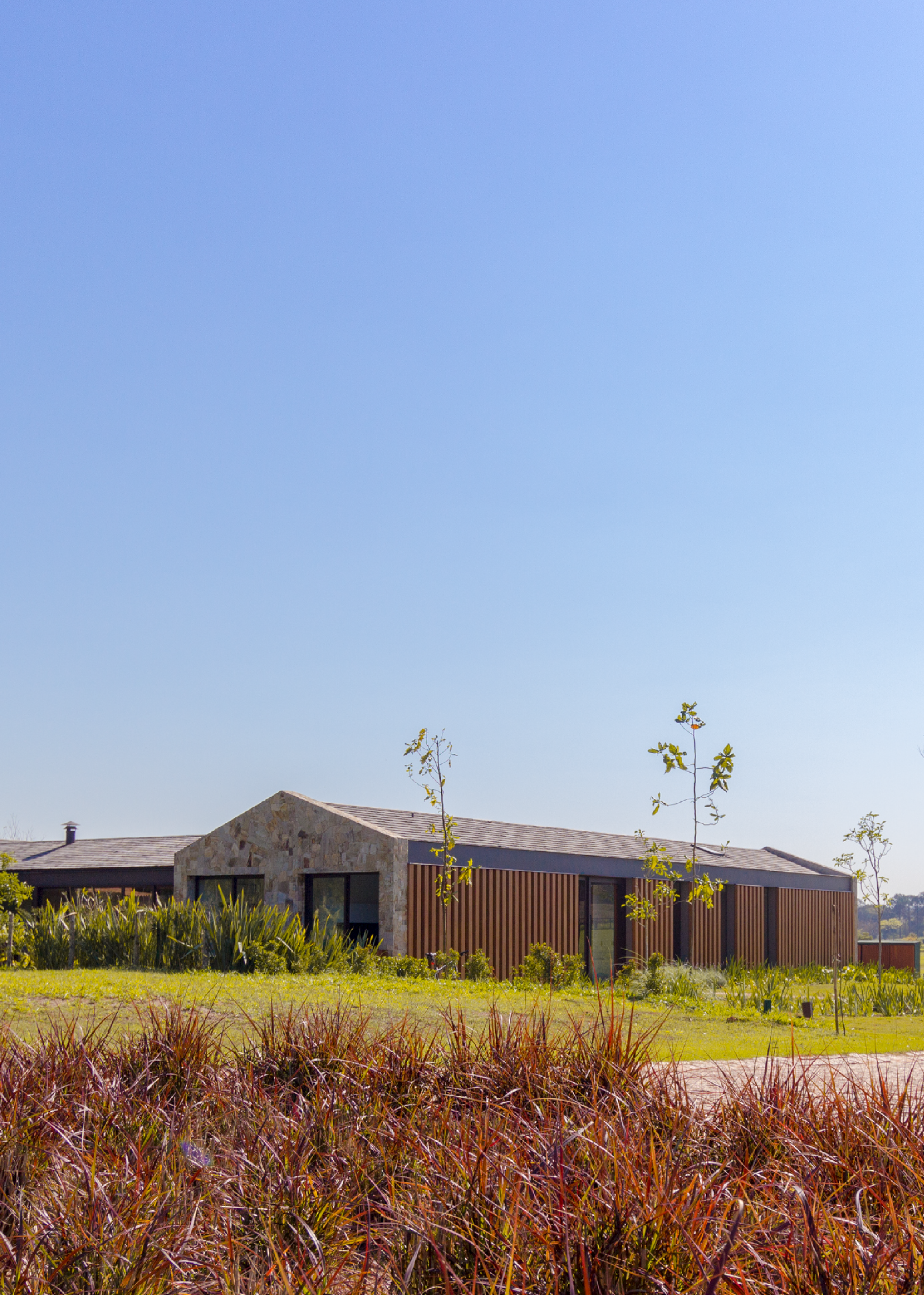
HARAS HOUSE
Location: Monte Mor/SP
Year: 2018
Built area | 456 m²
Architecture | 24 7 Architecture
Interiors | 24 7 Architecture
Decoration | 24 7 Architecture
Construction Management | Collective Works
Landscaping | Letícia Fortuna
Structural | WGA Engenharia
Installations | Solar Engenharia
Photography | Adriano Pacelli



Architecture
in Pavilions
The hectic day-to-day life in large urban centers drives families to seek a haven of tranquillity on weekends. Luckily for us, the plot of land chosen in a horse farm in the interior of São Paulo had a number of positive aspects for the design of the project: views, a large plot, solar orientation, generous setbacks, a high percentage of soil permeability and no boundary walls. However, a requirement in the condominium's building regulations regarding the roof of the houses took the clients by surprise.
The couple, who had just spent the vacations in a winery with contemporary architecture and influenced by one of our recently published projects at the time, wanted a house with a volume that hid the roofs, but the condominium's regulations did not allow the use of flat slabs or built-in roofs. It would be our first house with exposed roofs.
The program of needs required and the size of the plot were exactly in proportion to what we believed would be ideal for a single-storey house with plenty of open space for outdoor living.
Casa Haras is the result of a pavilion-like layout made up of three volumes: two parallel, oriented NE-South and a third perpendicular connecting volume oriented NO-SE, like an "H". The idea came from the desire to have the leisure area central to the other spaces in the house and, with the suggested layout, we were able to create two outdoor living areas: a main one with a deck and swimming pool and a secondary one with a spa, a water mirror and a fire pit which, although separated by the perpendicular volume, are visually connected by the transparency of the sliding glass doors.
The pavilion on the main façade basically houses the service area + garage, and is also where the social access to the house is located. A glass door on the main façade reveals the entrance hall and no other room, just a stone wall in the background and wooden panels on the sides, which conceal a wine cellar and a checkroom for visitors.
The central pavilion, glazed on both sides, concentrates an extensive social area with a dining room and a large living room with a fireplace, providing a feeling of full insertion into the leisure area of the house.
The third pavilion concentrates the most intimate wing with 4 suites and a TV room. The external balcony, common to all the rooms, allows a more direct circulation to the rooms of the house, since it eliminates the need to go through the internal corridor, making the circulation more dynamic and the house more integrated with leisure.
The ground floor distribution of the house's program gives all the rooms a sense of continuity beyond the built limit, since they all have a direct visual relationship through sliding glass doors with the more than 1,150m² of free land deducted from the house's built area. The high rate of soil permeability, in the order of 60%, ensured a generous area for the landscaping that embraces the house through the front, side and back setbacks, and advances through the deconstructed central core.
The simple volume and purity of the gable roof on all 3 blocks of the house was strengthened by the decision to bury the volume of the water tank under the pool deck. This intention ended up contributing significantly to the harmony of the architectural ensemble and the desired country house look, which was further strengthened by the use of natural materials, such as the stone cladding on the wall gables and the use of wood in the door panels, lining and facade cladding.













